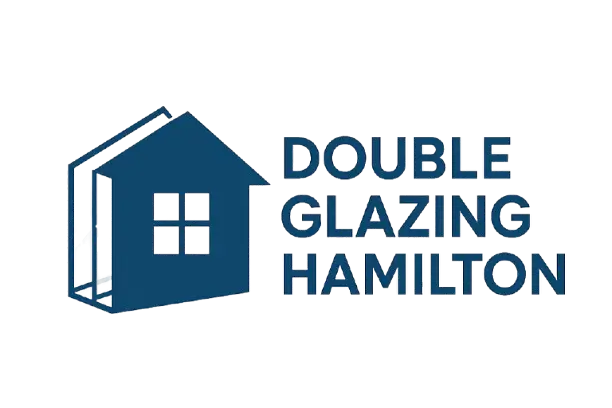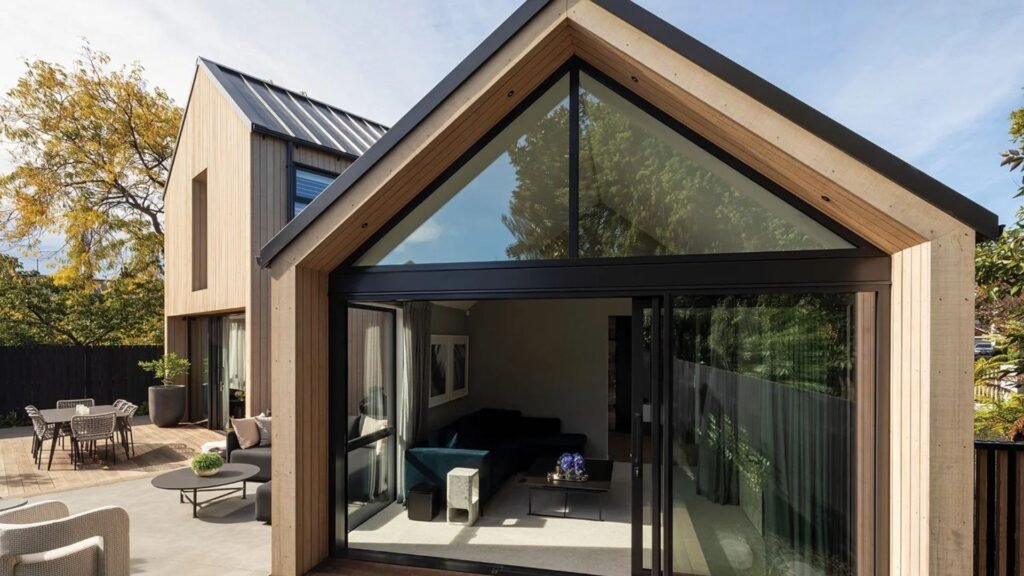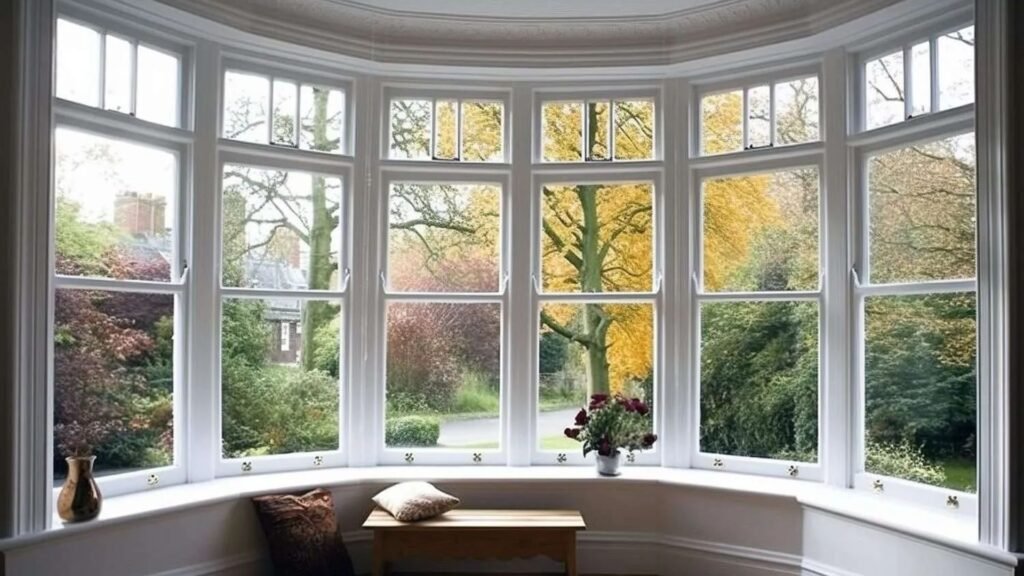Welcome to our guide on retrofit double glazing in New Zealand, a topic many homeowners are considering as power bills rise, winters feel colder, and condensation continues to be a problem in older Kiwi houses. Retrofit double glazing has become a popular option for those who want warmer, quieter, and healthier homes without replacing every window, but the real question is, “is it actually worth it?” In this article, we’ll break down what retrofit double glazing is, why it’s so common in NZ homes, the benefits you can expect, the costs involved, and the situations where it may not be the right choice. By the end, you’ll have a clear idea of whether this investment makes sense for your home and lifestyle.
Retrofit double glazing is often worth it in NZ if your existing window frames are in good condition. It helps make homes warmer, reduces power bills, cuts down noise, and controls condensation. While the upfront cost can range from a few hundred to several thousand dollars depending on the number and type of windows, many Kiwi homeowners find the long-term comfort, energy savings, and added property value make retrofit double glazing a smart investment.
Table of Contents
What Is Retrofit Double Glazing?
Retrofit double glazing means upgrading your existing single-glazed windows to double glazing while keeping the current frames. You keep the look of your home and gain better comfort and efficiency. A technician removes the old pane, fits a sealed two-pane unit, and finishes the frame so it looks tidy and secure.
What You Keep
- Existing timber or aluminium frames
- Existing reveal and trim
- Your home’s character and proportions
What You Upgrade
- A sealed glass unit with two panes
- An air or gas gap for insulation
- Optional low-E glass, warm-edge spacers, and new seals
Why It Appeals In NZ
- Many homes have solid frames but cold, noisy single glazing
- You want warmer rooms without a full window replacement
- You prefer less disruption and a faster install
How It Works In NZ Homes (Timber Vs Aluminium Frames)
Step-By-Step Overview
- Inspect frames for damage, leaks, or movement
- Measure openings and specify glass type (standard, low-E, laminated)
- Remove single pane and old putty or beads
- Fit the double-glazed unit (DGU) square and plumb
- Seal, re-bead, draught-proof, and clean down
Timber Frames
- Common in villas, bungalows, and character homes
- The installer rebates the sash or uses new timber beads to hold the DGU
- Low-E glass and quality seals lift winter performance noticeably
- Draught-proofing around sashes cuts cold air and rattles
- You keep the original profiles and period detail
Aluminium Frames
- Found in many 70s–90s homes and newer builds
- The installer often replaces sashes or uses adaptor beads to accept the thicker unit
- New gaskets, packers, and drainage paths protect against moisture
- Older non-thermally broken frames still conduct heat, so pair the DGU with low-E glass and warm-edge spacers for best results
- Coastal homes benefit from hardware suited to marine conditions
Glass And Spacer Choices That Matter In NZ
- Low-E glass: reflects heat back into rooms, improves winter comfort
- Argon gas fill: boosts insulation in colder regions
- Warm-edge spacers: reduce edge-of-glass condensation
- Laminated or acoustic glass: cuts road noise on busy streets
What To Expect On Install Day
- Most windows completed in hours, not days
- Minimal interior disruption compared with full replacement
- Clear communication on access, safety, and cleanup
Retrofit Vs Full Window Replacement
Scope
- Retrofit: keep frames, upgrade glass and seals
- Full replacement: remove frames, install new frames and glazing
Look And Character
- Retrofit: preserves the original style and timber detail
- Full replacement: updates the look; useful when frames are dated or mismatched
Performance
- Retrofit: strong improvement in warmth, noise, and condensation control
- Full replacement: potential step up again, especially with thermally broken aluminium, uPVC, or new timber systems
Cost And Timeline
- Retrofit: lower upfront cost per opening and faster install in most cases
- Full replacement: higher cost and longer lead times, plus interior finishing
Disruption
- Retrofit: limited plaster or paint touch-ups
- Full replacement: more building work, possible scaffolding, interior trim changes
Durability And Maintenance
- Retrofit: relies on the condition of existing frames; good sealing and drainage are key
- Full replacement: new frames, new hardware, and modern weathertight details
When Retrofit Suits You
- Frames are straight, solid, and worth keeping
- You want to retain character features in timber windows
- You want a faster path to warmth, quiet, and lower bills
- You are asking, “Is retrofit double glazing worth it NZ?” and you plan to stay in the home for several winters
When Full Replacement Makes Sense
- Frames are rotten, corroded, or leaking
- You are renovating cladding or altering openings
- You want thermally broken aluminium, uPVC, or a new frame color and profile across the whole home
Simple Decision Tips
- Check frame health first; fix or replace bad frames before glazing
- Prioritise rooms you heat the most: bedrooms, living rooms, and south-facing spaces
- Specify low-E glass and quality seals to maximise retrofit gains
- Compare quotes for retrofit double glazing NZ options and a like-for-like full replacement to see the gap in cost, time, and disruption
By understanding how retrofit works for timber and aluminium, and how it compares with full replacement, you can choose the path that fits your home, your budget, and your comfort goals.
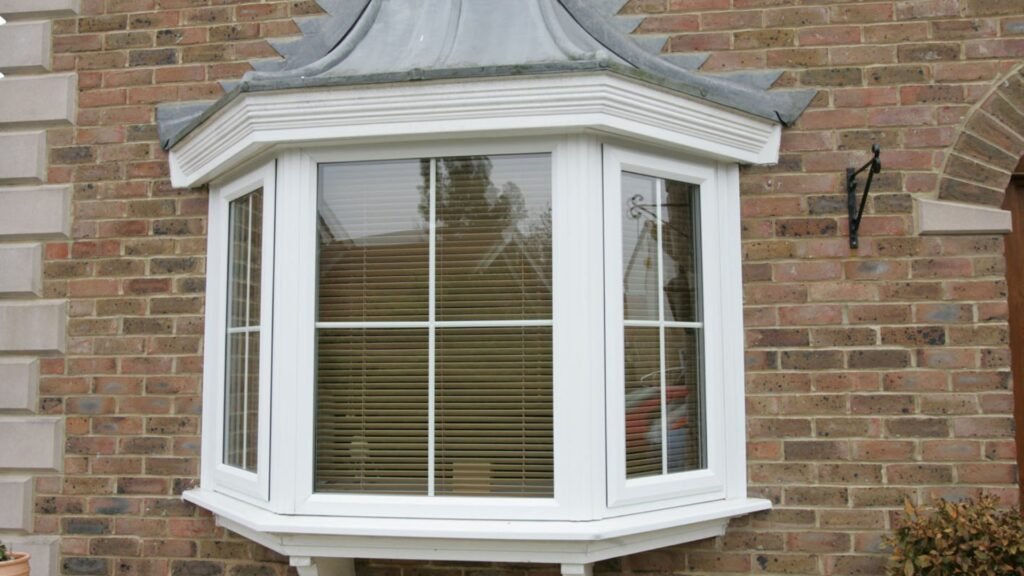
Why NZ Homeowners Consider It
You want a warmer, quieter, healthier home without a full window replacement. Retrofit double glazing in NZ answers common pain points many Kiwi households face. It targets heat loss, rising energy costs, moisture issues, and urban noise while keeping the look of your existing frames. If you live in a villa in Auckland, a 70s unit in Wellington, or a brick home in Christchurch, the drivers below will likely sound familiar.
Cold Drafts In Winter
Single panes bleed heat. Gaps around older timber or aluminium frames let cold air creep in. You feel it near the couch at night or first thing on a frosty morning. Retrofit double glazing adds an insulated glass unit and fresh seals that reduce air leakage and slow heat transfer.
- You get fewer cold spots near windows.
- Rooms hold temperature longer between heat pump cycles.
- Curtains feel like a comfort layer rather than a shield.
Practical Tips
- Pair retrofit glass with new weather seals around sashes.
- Close unused trickle vents only if you maintain fresh air in other ways.
- Use door seals to stop drafts across open-plan spaces.
High Power Bills From Heating
When windows lose heat, your heater works harder. That shows up on your monthly bill. Retrofit double glazing lowers heat loss so you need less energy to stay comfortable. Over time, the reduced run-time of heaters can offset part of the upfront cost.
- Better window insulation supports heat pumps and wood burners.
- Homes warm up faster after you arrive back in the evening.
- Night-time temperature swings smooth out, so you use “boost” modes less.
Practical Tips
- Combine retrofit double glazing with ceiling and underfloor insulation.
- Set a steady thermostat instead of on-off bursts.
- Use thermal curtains that close tightly to add another barrier on cold nights.
Condensation And Mould
Cold glass attracts moisture. You see beads on the pane at dawn and black spots on sill corners. That damp feeds mould and impacts indoor air quality. Retrofit double glazing raises the inner glass temperature, which reduces surface condensation. Many homeowners report clearer panes and drier frames in winter.
- Less wiping and fewer damp smells in bedrooms.
- Paint and timber last longer without constant moisture.
- Reduced mould risk supports a healthier home.
Practical Tips
- Keep bathrooms and kitchens ventilated with extractor fans.
- Run a dehumidifier on the wettest days.
- Leave small gaps for airflow behind furniture near external walls.
Street Noise In Urban Areas
Busy roads, buses on hills, flight paths, and nightlife all add to background noise. Single glazing offers little acoustic protection. Retrofit double glazing can cut a noticeable share of outside sound, especially with laminated or thicker glass and well-fitted seals.
- Bedrooms feel calmer at night.
- Home offices get fewer distractions during calls.
- Living areas near footpaths feel more private.
Practical Tips
- Ask about different glass thicknesses or laminated options for better noise control.
- Seal gaps around frames to stop whistling and traffic hiss.
- Treat the loudest façades first for the biggest gain.
Why Older NZ Houses Are More Likely To Need It
Many New Zealand homes built before recent building code improvements still have single glazing. Frames may be sound, but glass performance lags modern standards. That is common in villas, bungalows, 60s and 70s builds, and coastal properties with weathered joinery. Retrofit double glazing lets you keep character details while lifting comfort.
- Timber frames in good condition are prime candidates for retrofitting.
- Older aluminium without thermal breaks benefits from insulated units and fresh seals.
- Heritage homes avoid a full replacement that could change street appeal.
When To Reassess
- If frames are rotten, corroded, or out of square, consider full replacement.
- If you plan major renovations, a whole-of-house window upgrade may suit better.
- Always check local council guidance if your property has heritage features or if work may require consent.
Bringing It All Together
If you face cold drafts, high heating costs, persistent condensation, or city noise, retrofit double glazing in NZ tackles all four at once. You keep your home’s look, improve day-to-day comfort, and reduce energy use. Start with a window condition check, get a detailed quote that lists glass type and seals, and prioritise the rooms you use most.
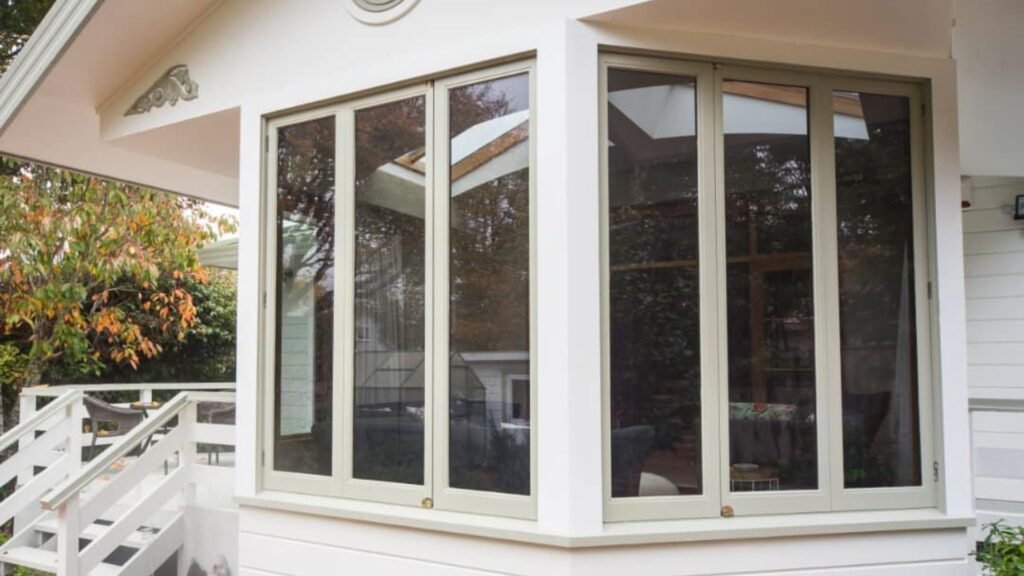
Benefits Of Retrofit Double Glazing
Retrofit double glazing targets the biggest weak spot in many NZ homes: heat loss and drafts through windows. In houses built to only meet minimum code, windows can account for up to 40% of heat loss, so upgrades here deliver fast comfort gains you can feel.
Energy Efficiency
- Double glazing cuts heat escaping through glass by about 70%. That means your heater works less and rooms stay warmer for longer.
- Step it up with low-E glass. Low-E double glazing reduces window heat loss by about 30% compared with standard double glazing.
- Fill the cavity with argon gas instead of air for extra performance. EECA notes a further 3–9% reduction in heat loss; BRANZ also reports gains from gas fill when the unit is designed well.
- Frame choice matters. Timber and uPVC frames insulate better than non-thermally-broken aluminium. If you keep aluminium, choose thermally broken frames to reduce heat bridging.
NZ Example
Upgrading a typical 1960s timber-frame home to low-E, argon double glazing in main living spaces can noticeably reduce heater run time on cold nights, especially in Wellington and Dunedin.
Comfort
- Tighter seals and new sashes cut drafts around tired joinery, so rooms feel stable and even.
- Fewer cold spots near windows encourages you to use more of each room.
- Morning sun warms spaces and the improved units help hold that warmth after dark.
Noise Reduction
- Two panes with a sealed gap block more outside noise than single glazing.
- For busy streets or flight paths, combine double glazing with laminated glass or varied pane thickness for stronger acoustic control. Selection is based on target room sound levels from AS/NZS 2107.
- Seal quality matters. Even small gaps around frames let sound leak in, so good installation is key.
Quieter bedrooms in Auckland near arterials or train lines, and calmer living rooms in windy Wellington suburbs.
Condensation Control
- Warmer interior glass surfaces mean less overnight condensation on panes and sills. EECA highlights reduced condensation as a core benefit of double glazing.
- Lower condensation helps keep indoor humidity in check, which reduces mould growth risk. Mould needs high humidity or condensation to thrive.
- Pair the upgrade with kitchen and bathroom extraction and basic airflow habits for best results.
Health Payoff
Drier rooms are easier to heat and feel healthier to live in.
Property Value
- Buyers in NZ now look for warm, dry, quiet homes. Agents report double glazing, good insulation, and heating are common “must-haves,” which can improve buyer appeal and time-to-sell.
- In older villas or bungalows, retrofit solutions keep original character while lifting comfort, useful when you want performance without a full frame replacement.
Practical Tip
If you plan to sell within a few years, prioritise high-impact rooms first (living areas and main bedrooms) to improve day-to-day comfort and buyer perception.
Quick NZ-Specific Pointers
- Start where you heat the most. Focus on living areas and large north-and west-facing windows.
- Choose low-E and quality spacers; avoid aluminium spacers that conduct heat.
- If you keep aluminium, specify thermally broken frames; if you have solid timber, retrofitting IGUs into existing sashes is often viable.
For many NZ homes, retrofit double glazing delivers warmer rooms, lower bills, calmer acoustics, and fewer damp patches, all with strong, evidence-based gains at the window where losses are highest.
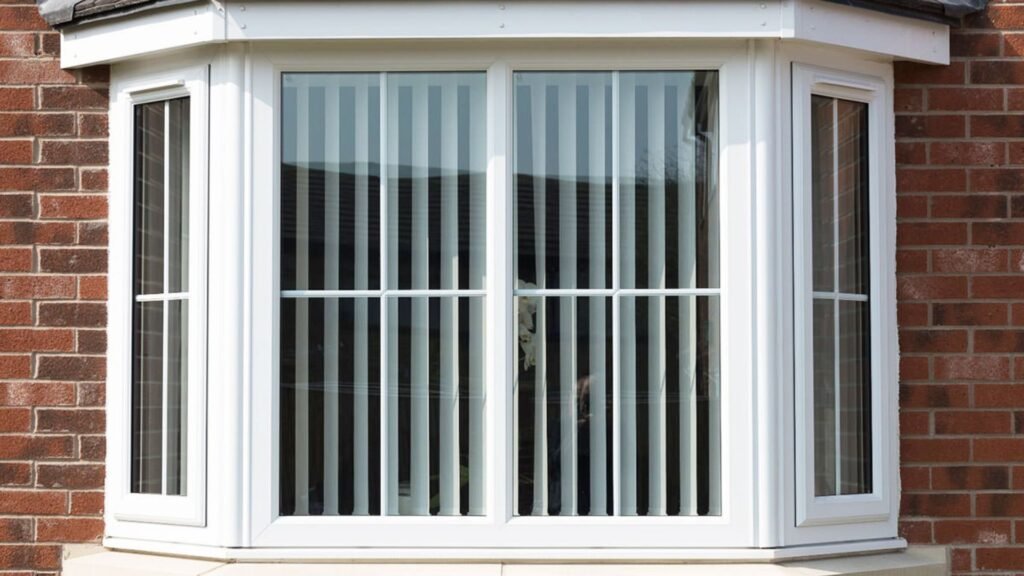
The Costs In NZ
When deciding if retrofit double glazing is worth it in New Zealand, cost is often the first factor homeowners look at. The price can vary widely depending on the type of property, the number of windows, and the materials chosen.
Average Cost Per Window Or House
On average, retrofit double glazing in NZ can range between $350 to $700 per window. For a standard three-bedroom house, this can add up to anywhere from $8,000 to $15,000. The exact figure will depend on whether you are upgrading only a few key rooms, such as bedrooms and living areas, or retrofitting the entire house.
Factors Affecting Price
Size And Type Of Window
Larger windows naturally cost more to retrofit, especially sliding doors, bay windows, or floor-to-ceiling glass panels. Standard casement or sash windows are often more affordable to upgrade.
Condition Of Frames
Retrofit double glazing is only possible if the existing frames are in good condition. If timber frames are rotten or aluminium frames are corroded, they may need repairs or replacement before the glazing can be fitted. This can add significant costs to the project.
Choice Of Glass
Homeowners can choose between standard double glazing, low-E (low emissivity) glass, or argon gas-filled units. Low-E glass improves insulation by reflecting heat back into the home, while argon gas provides an extra thermal barrier. These upgrades improve performance but usually increase the price by 10–20%.
Comparison With Full Window Replacement
Retrofit double glazing is generally more affordable than a full replacement. Replacing entire window units, including frames, can cost $25,000 or more for an average home, making retrofit a cost-effective option when frames are still sound. That said, brand-new windows may deliver slightly better energy performance and a longer lifespan.
Balancing Costs With Long-Term Savings
While the upfront expense may feel high, many New Zealand homeowners find that retrofit double glazing pays for itself over time. Reduced heating costs during cold winters, less reliance on dehumidifiers to control condensation, and increased property value all contribute to long-term savings. For households planning to stay in their home for several years, the return on investment can be significant.
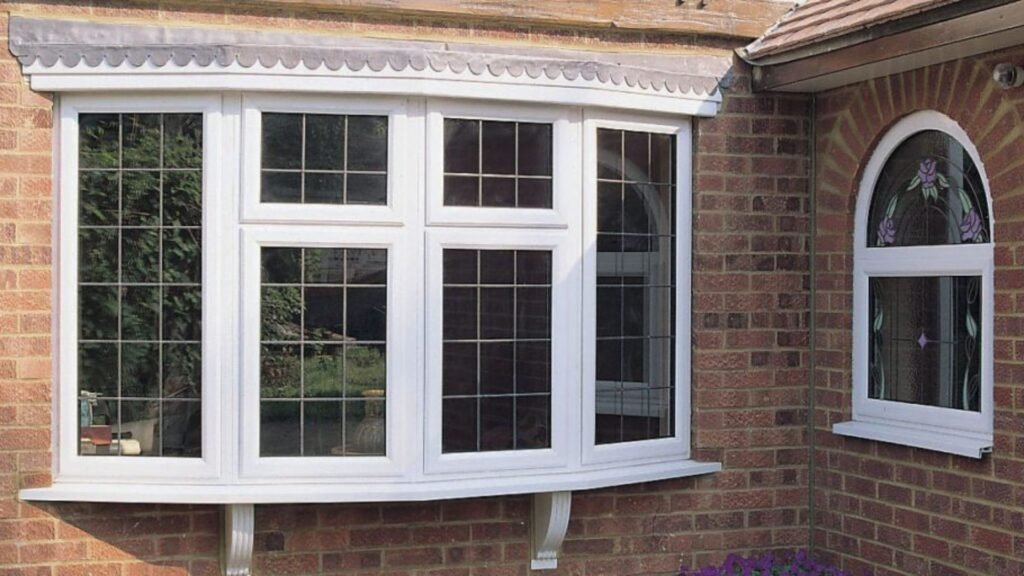
Potential Drawbacks Of Retrofit Double Glazing In NZ
Retrofit double glazing can be a smart upgrade, but it isn’t the best fit for every home or budget. Use the points below to weigh up the trade-offs before you book quotes.
Not All Windows Are Suitable
Some frames simply aren’t ready for new double-glazed units.
Rot, swelling, corrosion, or warped sashes can stop a tight seal and shorten the life of the unit.
- Timber frames with hidden rot won’t hold screws or seals well.
- Old aluminium frames can have pitting or broken thermal breaks.
- Out-of-square openings make it hard to seat a unit without gaps.
- Leaky homes or high-moisture rooms can push moisture into the spacer over time.
What Can You Do?
- Ask the assessor to test for moisture and check squareness.
- Replace or repair failed frames before any glazing work.
- If many frames are shot, compare prices for full replacement windows.
- Consider secondary glazing as a stop-gap in tricky rooms.
Questions To Ask
- “Are my frames structurally sound for at least 10–15 years?”
- “Do any sashes drag, bind, or show daylight at the edges?”
May Not Match New Double Glazing Performance
Retrofit units lift comfort, but brand-new windows can still outperform them.
- Frame design matters. Older frames conduct more heat than modern thermally broken ones.
- Weather seals on legacy joinery may not be as tight as new systems.
- Glass options can be limited by the depth of your existing frames, reducing spacer size or gas fill choices.
- You won’t fix thermal bridges in surrounds or poorly insulated reveals.
How To Narrow The Gap
- Choose low-E glass and warm-edge spacers if your frames allow it.
- Upgrade seals and draught-proofing during the retrofit.
- Add thermal curtains or blinds to boost night-time performance.
- Pair glazing with ceiling, underfloor, or wall insulation to lift whole-house results.
Upfront Cost Can Be High
The first bill is the biggest hurdle for many NZ households.
- Costs scale with window count, size, and shapes like bay or feature panes.
- Specialty glass (low-E, laminated, acoustic, argon fill) raises the price.
- Scaffolding, access issues, and heritage details add labour time.
- Fixing frames or replacing hardware can expand the scope.
Ways To Manage The Spend
- Prioritise cold rooms first: bedrooms and living areas you heat nightly.
- Stage the work in phases across seasons.
- Get at least three detailed quotes with glass specs listed line by line.
- Ask about warranties on glass units and workmanship.
Value Check
- Compare the comfort gain and power savings against the years you plan to stay.
- Would full replacement windows pay back faster in your case?
Quality Varies By Installer
Retrofit results depend on skill, not just the glass.
Poor measuring, rushed sealing, or sloppy finishing can undo the benefits.
- Tolerance errors lead to rattle, leaks, or premature unit failure.
- Wrong sealant type can react with spacers or frames.
- Inconsistent packers cause stress points and fogging.
- Messy trims hurt street appeal and resale confidence.
How To Choose Well
- Look for consistent local reviews and recent NZ project photos.
- Ask for references for homes similar to yours (timber villa, brick bungalow, aluminium joinery).
- Request written specs: glass type, spacer, gas fill, sealant brand, and warranty length.
- Check turnaround for fixes if a unit fails or fogs.
On-Site Signals Of Good Practice
- Careful moisture checks, square measurements, and sash adjustments.
- Clean, continuous beads and tidy trims with no gaps.
- Test closures on every sash before sign-off.
Bottom Line For NZ Homeowners
Retrofit double glazing can deliver warmer rooms, quieter nights, and better condensation control, but the fit depends on your frames, your goals, and the installer you trust. If your joinery is sound, you select the right glass, and you hire a proven crew, retrofit can be worth it. If frames are failing or you want top-tier thermal performance, compare retrofit against full window replacement before you decide.
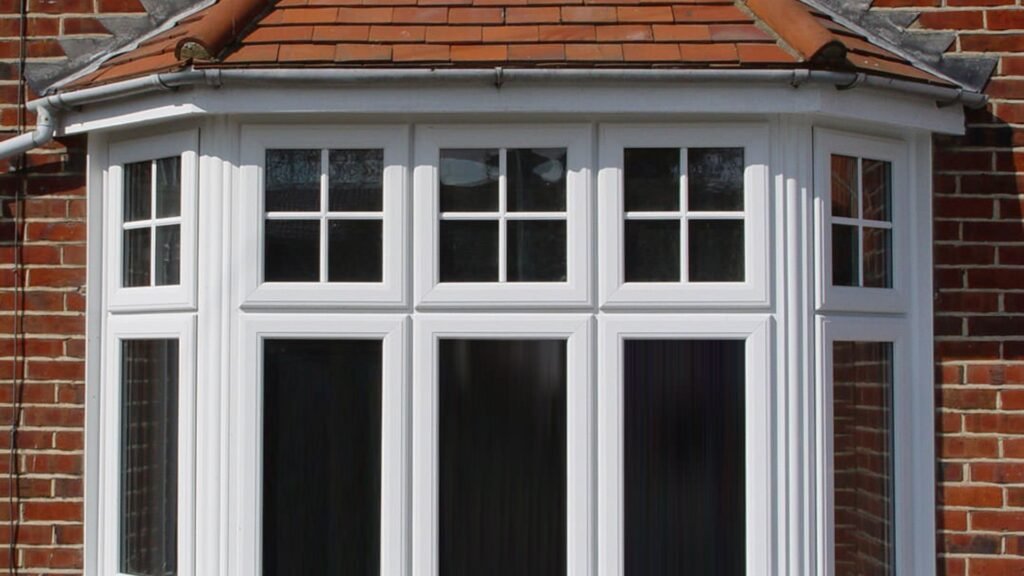
Alternatives To Consider
When deciding if retrofit double glazing is worth it, it helps to look at the other options available for New Zealand homes. Not every property is suitable for retrofitting, and sometimes another solution may be more practical or affordable. Below are three common alternatives and when each might make more sense.
Secondary Glazing (Cheaper Option)
Secondary glazing involves adding a second pane of glass or acrylic to the inside of your existing window frame. Unlike retrofit double glazing, it doesn’t replace the original glass but creates an extra barrier against heat loss and noise.
- Pros: Lower cost compared to retrofitting, simple installation, effective at reducing drafts and condensation.
- Cons: Not as durable or long-lasting as true double glazing, and the appearance may not be as seamless.
- Best for: Renters, heritage homes where window replacement is restricted, or households wanting better insulation on a budget.
Heavy Curtains Or Thermal Blinds
Another cost-effective option is investing in heavy curtains or thermal blinds. While they don’t upgrade the glass itself, they act as insulation by trapping warm air inside during winter and blocking heat during summer.
- Pros: Affordable, easy to install, and available in many styles to suit your décor.
- Cons: Less effective than double glazing because they only work when closed, limiting natural light.
- Best for: Short-term solutions, budget-conscious households, or when window upgrades aren’t possible.
Full Frame Replacement With Modern Windows
For homes with old, damaged, or rotten frames, full window replacement may be the better long-term choice. Modern double or triple-glazed windows with insulated frames provide the highest level of energy efficiency.
- Pros: Superior performance, improved home value, and long-lasting results.
- Cons: The most expensive option, often requiring extensive work.
- Best for: Major renovations, new builds, or homes where the frames are beyond repair.
When Each Option Makes More Sense
- Choose secondary glazing if you want a quick, affordable way to improve comfort without major construction.
- Choose thermal curtains or blinds if you need an immediate, low-cost fix to keep your home warmer in winter.
- Choose full frame replacement if your current frames are in poor condition or if you’re planning a long-term renovation.
By comparing these alternatives with retrofit double glazing, you can make a more informed decision about which solution suits your home, budget, and lifestyle best.
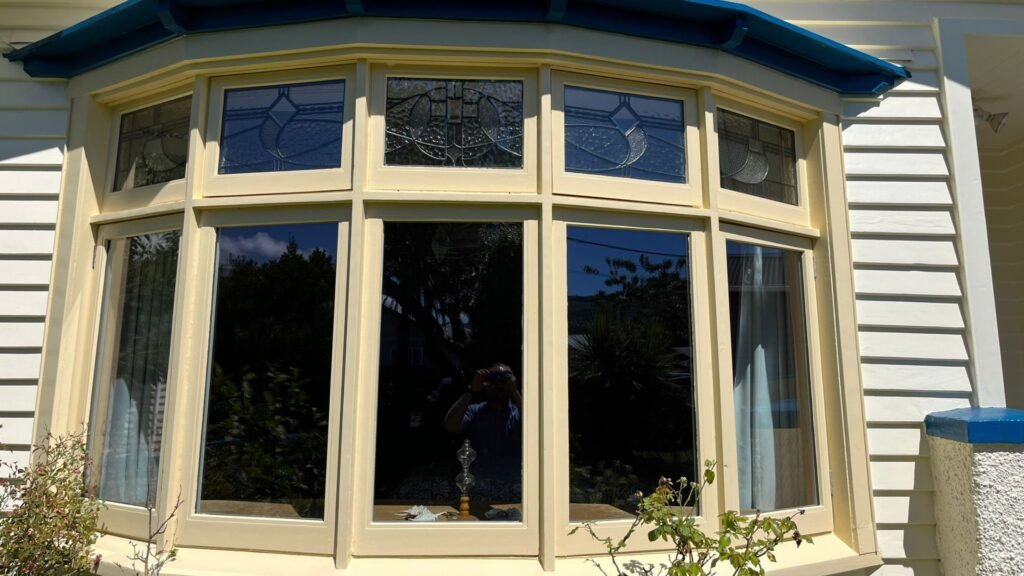
Is It Worth It? Key Factors For NZ Homeowners
Retrofit double glazing can make a real difference in Kiwi homes, but the value depends on your house, your plans, and your budget. Use the checks below to decide if it fits you.
When Retrofit Makes Sense
You Have Solid Existing Frames
- Press a fingernail into timber. Does it feel firm, not soft?
- Check aluminium for straight lines, smooth sliders, and tight corners.
- If frames are sound, retrofit gives you warmer rooms without a full replacement.
You Want To Keep The Look Of Your House
- Villas, bungalows, and character homes often rely on original profiles.
- Retrofit keeps the style while improving insulation and comfort.
- Ask the installer to match beading and sightlines so the change is subtle.
You Plan To Stay In Your Home Long-Term
- You benefit from years of lower heating use and less condensation.
- Warmer bedrooms and a quieter lounge improve daily life.
- Long stays help spread the upfront cost across many winters.
You Live On A Busy Street Or Windy Ridge
- Double panes reduce road noise and rattles.
- Tighter seals help with drafts during southerlies.
- Sleep and work feel easier in a calmer space.
You Want Faster Results Than A Full Replacement
- Retrofit is usually less invasive than removing frames.
- Rooms stay usable, and mess stays lower.
- Good for families who need a quick, tidy upgrade.
When It Might Not
Frames Are Rotten Or Corroded
- Soft timber, black mould inside sills, or flaky aluminium are red flags.
- Water stains or swelling mean moisture is already inside.
- In these cases, a full frame replacement protects your spend.
You’re Renovating Extensively
- If you are opening walls or changing layouts, plan new windows now.
- New frames plus double glazing can lift performance beyond retrofit.
- Doing it once saves repeat labour and keeps lines clean.
You Need Structural Changes
- Bowed frames, sagging lintels, or out-of-square openings call for builder input.
- Fix structure first, then choose the right glazing path.
- Skipping this step risks leaks and poor seals.
Heritage Rules Limit Changes
- Some areas require specific profiles or glass choices.
- Get consent advice early so you do not backtrack.
- A specialist can propose a compliant path.
Decision Framework: Cost Vs. Comfort Vs. Long-Term Savings
Start With Your Goal
- Warmer bedrooms? Quieter office? Less morning condensation?
- Rank your top two outcomes. This guides glass choices like low-E or wider gaps.
Map The Costs
- Get three quotes that list glass type, spacer, gas fill, and warranty.
- Ask for a room-by-room plan so you can stage the work.
- Check what is included: trims, paint touch-ups, disposal of old glass.
Estimate The Gains
- Comfort: Fewer drafts, more stable indoor temps, less wiping of windows.
- Health: Drier rooms help reduce damp spots and musty smells.
- Noise: Noticeable drop in traffic hum and late-night clatter.
- Resale: Buyers value warmer, quieter homes with modern glazing.
Run A Simple Payback Example
- Example only: If your project costs $12,000 and you save about $800 a year on heating and dehumidifying, payback is roughly 15 years.
- Your numbers will differ. The comfort boost starts on day one.
Check The Fit For Your House
- Solid frames + long stay = strong case for retrofit.
- Tired frames + full reno = better case for new windows.
- Not sure? Retrofit key rooms first, then reassess.
Reduce Risk With The Right Installer
- Look for clear itemised quotes and local references.
- Ask about low-E options, warm edge spacers, and gas fills.
- Confirm workmanship and unit warranties in writing.
Use A Quick Self-Test
- Do I have good frames?
- Do I plan to live here for at least five years?
- Do I value comfort and noise control as much as pure dollar savings?
- If you say “yes” to two or more, retrofit likely suits you.
Practical Next Steps
- Photograph problem windows and note drafts or condensation times.
- Request quotes for the same spec so you can compare like for like.
- Start with the coldest rooms or the street-facing side for maximum impact.
You want a home that feels warm, quiet, and dry across NZ winters. If your frames are in good shape and you plan to stay, retrofit double glazing is often worth it. If frames are failing or you are rebuilding rooms, new windows may serve you better. Choose the path that fits your house and your timeline, and you will feel the gain every day.
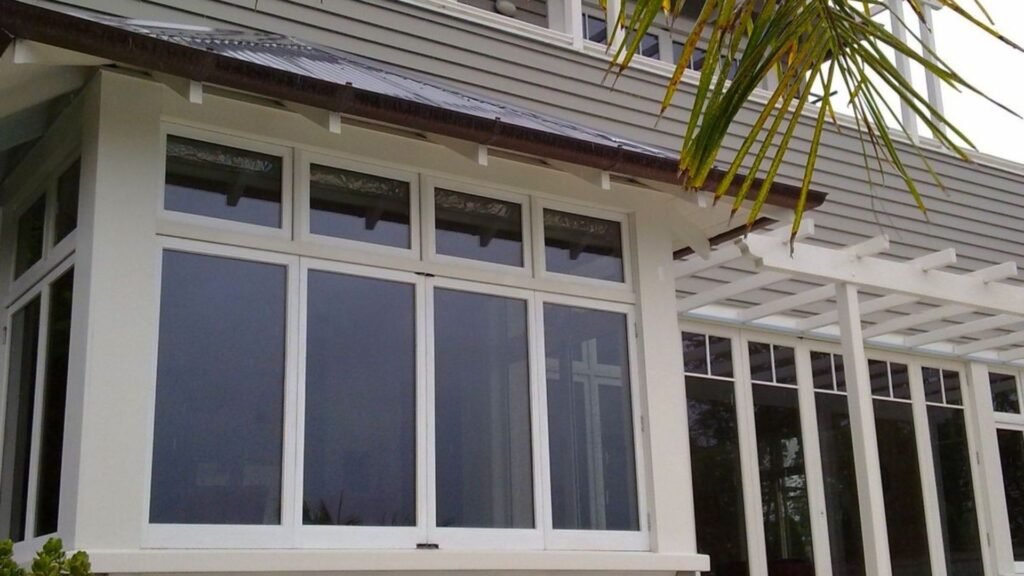
How To Choose A Retrofit Double Glazing Provider In NZ
You want warmer rooms, less noise, and fewer winter headaches. The right installer makes all the difference. Use the checks below to hire with confidence.
Check Experience With NZ Homes
- Ask how many NZ retrofits they completed in the last 12 months.
- Get examples from houses like yours: villa, bungalow, 70s brick, or apartment.
- Confirm they work with your frame type: timber, aluminium, or uPVC.
- Request before-and-after photos and a brief case study. What was the problem? What changed?
Read References And Reviews
- Look for patterns in feedback, not single stars. Are customers happy six months later?
- Call two recent clients. Ask about punctuality, mess, and condensation after the job.
- Check how the installer responds to complaints. Do they fix issues fast?
Ask About Glass Quality And Thermal Components
- Confirm low-E glass options. Ask which coating they recommend and why.
- Ask about gas fill (often argon) and spacer type. Warm-edge or thermal spacers reduce heat loss at the edges.
- Discuss glazing thickness and air-gap size for both warmth and noise control.
- Request the full window spec in writing for your quote.
Confirm Warranties And After-Sales Service
- Glass unit warranty period. What does it cover? Fogging, seal failure, or only breakage?
- Workmanship warranty. Who fixes a drafty sash or sticky slider?
- Response time for call-backs. Ask for a service contact and process.
- Keep proof of purchase, install date, and product codes for future claims.
Key Questions To Ask Before Hiring
- What problem are we solving first: heat loss, noise, or condensation?
- Which rooms give the best return if we stage the project?
- How will you treat old timber or corroded aluminium? Repair, replace parts, or decline?
- Will sightlines, beading, or putty lines change the look of my home?
- What is the expected install time per window and total project timeline?
- How will you protect floors, curtains, and gardens during install?
- Do I need consent or any paperwork for this retrofit? Who handles it?
- What maintenance do you recommend after install?
Red Flags To Watch For
- Vague quotes with no glass spec, spacer type, or warranty detail.
- Pressure sales or “today only” pricing.
- No site visit before quoting.
- Promises that every window is suitable when frames look tired or rotten.
Compare Quotes The Right Way
- Line up like-for-like specs: low-E type, gas fill, spacer, frame repairs, trims.
- Note extras: re-beading, latch upgrades, child-safety stays, fly screens.
- Balance price with service: install crew size, cleanup, and disposal of old glass.
- Ask for a staged plan if budget is tight: start with bedrooms and living areas.
What A Good On-Site Assessment Looks Like
- They check frame condition, drainage, sashes, and hinges.
- They measure each opening, not “one size fits all.”
- They look for moisture, mould, or water entry and explain remedies.
- They discuss ventilation to manage winter humidity and reduce fogging.
Contract, Timeline, And Payment Terms
- Get a written scope with specs, room list, and finish details.
- Include start date, milestones, and daily work hours.
- Agree on payment schedule tied to milestones, not vague promises.
- Note how variations are priced and approved before extra work begins.
Simple Buyer’s Checklist
- Low-E glass, gas fill, and thermal spacer confirmed in writing.
- Warranty periods and service contact listed on the contract.
- Recent NZ references verified.
- Clear quote, clear timeline, clear cleanup plan.
Book a home assessment through Double Glazing Hamilton, if you need someone who’s expert in ritrofit double glazing windows.
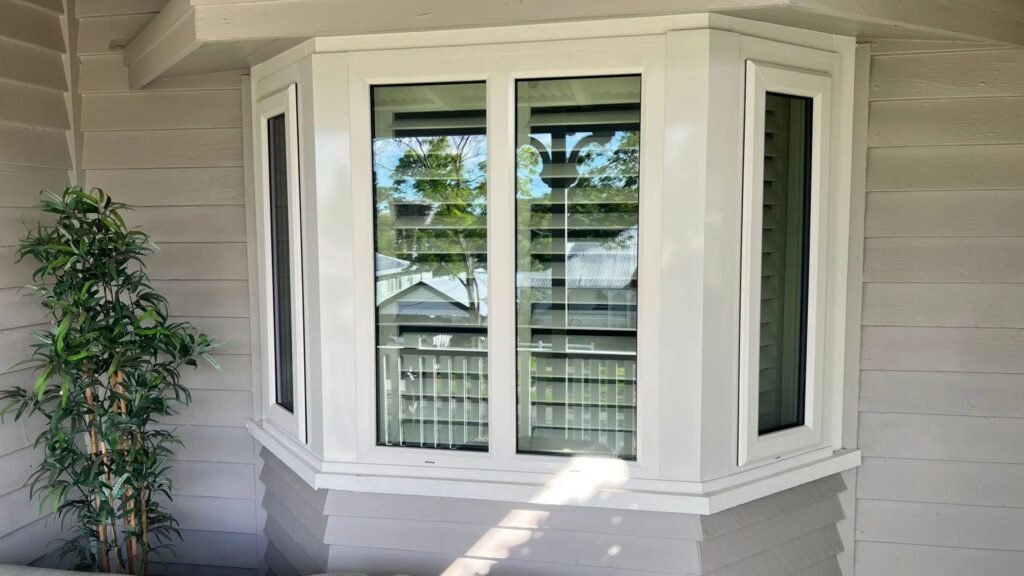
FAQs: About Is Retrofit Double Glazing Worth It In NZ?
What is retrofit double glazing?
Retrofit double glazing is the process of upgrading your existing single-glazed windows by fitting a new double-glazed unit into the existing frame. It allows you to enjoy the benefits of double glazing without replacing the entire window frame.
How does retrofit double glazing work?
An installer removes the old glass, checks the frame, and then inserts a sealed double-glazed unit. This usually involves a spacer, air or gas-filled cavity, and low-E glass options for added insulation.
How much does retrofit double glazing cost in NZ?
Costs vary depending on window size, type, and condition. On average, prices start at a few hundred dollars per window and can reach several thousand for an entire house. Factors such as low-E glass or argon gas filling can increase the cost.
What are the benefits of retrofit double glazing?
Key benefits include better insulation, lower power bills, reduced noise, less condensation, and improved comfort. Many NZ homeowners also report higher property value after upgrading.
Is retrofit double glazing suitable for all homes?
It works best if your existing frames are in good condition. Timber and aluminium frames can often be retrofitted, but if the frames are rotten or corroded, full replacement may be necessary.
Does retrofit double glazing really save money on power bills?
Yes. By improving insulation, less heat escapes in winter and less cool air escapes in summer. This reduces the need for constant heating or cooling, which lowers electricity costs over time.
What are the drawbacks of retrofit double glazing?
Potential drawbacks include high upfront costs, limited improvement if frames are poor quality, and variation in results depending on the installer’s expertise. It may also not be as effective as brand-new double-glazed windows in some cases.
Are there alternatives to retrofit double glazing?
Yes. Alternatives include secondary glazing, which adds a second pane without replacing glass, thermal curtains or blinds, and full window replacement. Each option has different costs and benefits.
How long does retrofit double glazing last?
High-quality double-glazed units typically last 15–25 years if installed correctly. The lifespan depends on the materials used, the installer’s skill, and maintenance of the frames.
How do I choose the right installer in NZ?
Look for installers with strong reviews, local experience, and membership in trade associations. Ask about warranties, the type of glass used (such as low-E), and request multiple quotes before deciding.
Conclusion
Retrofit double glazing can make a clear difference in NZ homes: warmer rooms in winter, lower power bills, less condensation, and reduced street noise, with added buyer appeal for many properties. The trade-off is the upfront cost and the need for solid frames and skilled installation, and in some cases full window replacement will perform better. So, is retrofit double glazing worth it in NZ? Yes, for many homeowners it delivers real comfort and long-term savings, but not for every house. Weigh your frame condition (timber or aluminium), budget, and how long you plan to stay. Compare expected energy savings against quotes for both retrofit and full replacement, and factor in noise and condensation issues you want to solve. Then take the next step: talk to a trusted local provider for an in-home assessment and a written, itemized quote so you can choose the option that gives your home the best value.
